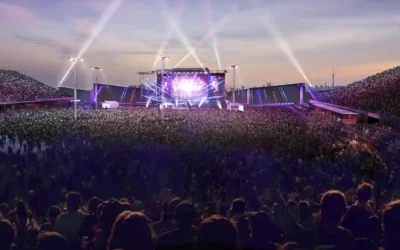The power that reality TV’s singing competitions once had over TV ratings, as well as over the fates of their finalists, may finally be waning as ratings and concert audience draws decline.
First came “American Idol,” a U.S. version of two earlier singing competition shows in the U.K. Upon its 2002 debut, the show seized the hopes and aspirations of millions of people who dreamed of finding fame as recording artists. Growing in popularity each year, by 2011 Nielsen deemed “American Idol” to be the most watched show on television, as well as the only show to hit number one for eight seasons in a row.
Others hoped to copy “American Idol,” such as NBC who brought over Dutch television’s “The Voice” in 2011. Receiving solid ratings throughout its first two seasons, this season “The Voice” has topped a slipping “American Idol” at least twice in the Nielsens.
Season one winner, Connecticut’s Javier Colon, released an album last year to only moderate success. “Come Through for You” got to No. 20 on the R & B charts and to only 134 on the general U.S. charts.
Simon Cowell, the infamous “Idol” judge who also judged for Britain’s “The X Factor,” brought a version of this solo and group singing competition to the U.S. in 2011. First season ratings were disappointing and led Cowell to fire two judges and the host. The winner, Melanie Amaro, will be releasing her debut album sometime in 2012.
In its earlier years, “Idol” was able to churn out top selling artists such as Kelly Clarkson, Carrie Underwood, Jennifer Hudson, and Clay Aiken. During that period of time, there seemed to be no end to the star making abilities of this show.
Recent ratings, however, particularly for the 2012 season, have raised doubts about the show’s future as a TV superpower, and possibly the ability of any of these shows to create the next pop star.
Ticket sales for the most recent “Idol” finalists tell the story.
“We’ve seen more lackluster demand for some of these newer ‘Idol’ stars as compared to the earlier breakout performers like Kelly Clarkson, Ruben Studdard, or Clay Aiken,” reports Will Flaherty, Director of Communications for ticket search engine Seatgeek.com.
“For example, the average ticket to see Kelly Clarkson on her current tour has cost around $132, while the average Clay Aiken ticket from his fall 2010 and spring 2011 tours averaged $130. Meanwhile tickets to see the American Idols’ Live tour (which included Lee DeWyze and more of the newer winners) in 2010 averaged only $91.”
Flaherty wonders if even the recent pairing of “American Idols” stars with established names gives a clue to where this genre is heading: “Scotty McCreery has toured recently with Brad Paisley, so it’s hard to isolate how much fans are paying to see just him, but that sort of arrangement may be more reflective of the theory that fans may be developing ‘American Idol’ fatigue, and that it’s a harder sell to have simply one ‘Idol’ winner headline a show — hence the “Idols Live” tours and winners like McCreery touring as an opening act for a larger name draw.”
Lena Siegendorf, vice president of Premium Seats USA notes that a decrease in demand for “Idol” stars in recent years has led the company to carry fewer tickets: “In the beginning, these ‘manufactured’ stars were a much bigger hit. We have stopped carrying as much inventory for tours like ‘American Idol’ because the interest is just ok. Not to say there aren’t some dedicated fan bases that follow the show — find a favorite — and follow them until the end; we’re just not seeing these tours as top sellers on the secondary market.”
It is unclear whether the public has simply become bored with such reality shows and their numerous finalists who are all trying to get their fifteen minutes of fame, or if they have soured on the very idea of the “created” star. What is clear is that the public has made a choice and is making it known, with both their television remotes and with their wallets.



